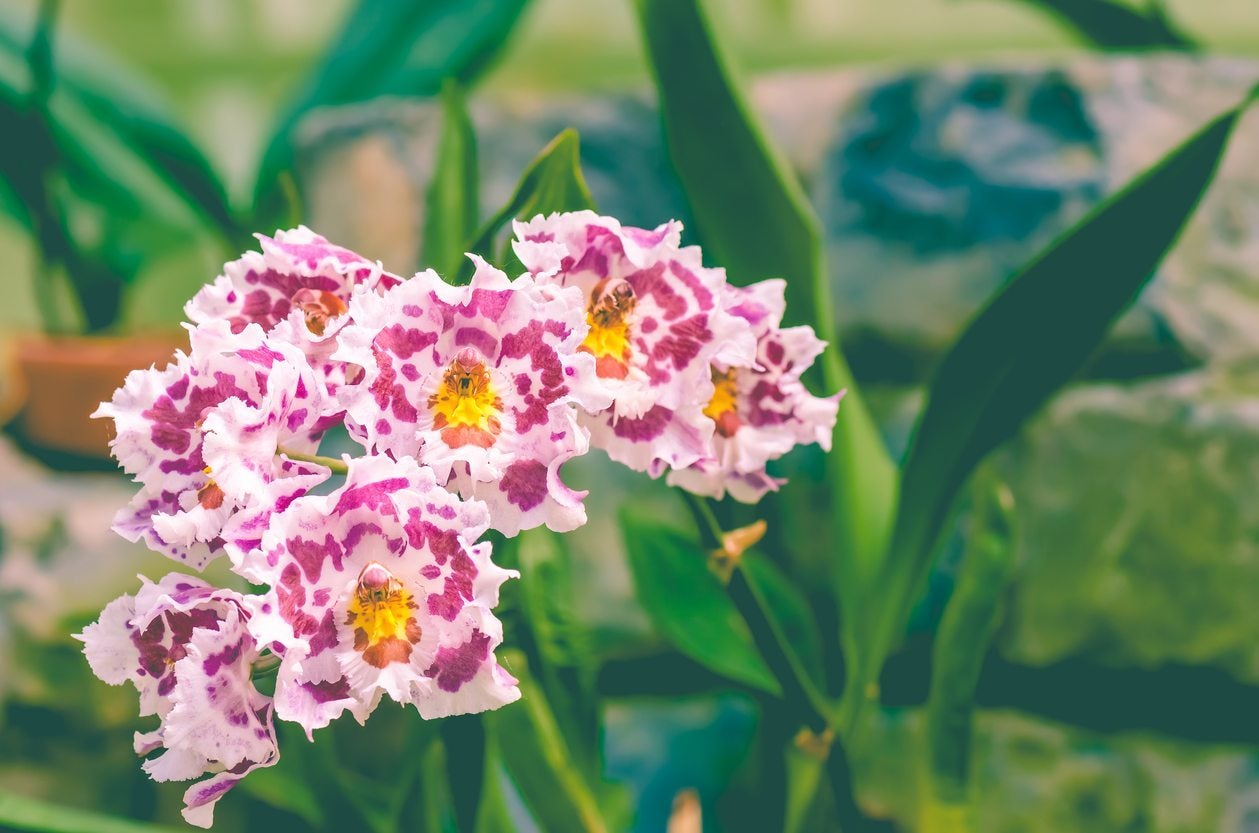Odontoglossum Plant Care: Helpful Tips On Growing Odontoglossums


What are odontoglossum orchids? Odontoglossum orchids are a genus of about 100 cool-climate orchids native to the Andes and other mountainous regions. Odontoglossum orchid plants are popular among growers due to their interesting shapes and beautiful colors of the various odontoglossum orchid varieties. Interested in growing odontoglossums? Read on to learn how.
Odontoglossum Plant Care
Odontoglossum orchid plants aren’t the easiest orchid to grow, but they’ll reward you richly if you can meet their basic needs. Temperature: Odontoglossum orchid plants prefer cooler conditions and are fairly picky about temperatures. Keep the room below 74 F. (23 C.) during the day and about 50 to 55 F. (10-13 C.) at night. Orchids in warmer rooms will need additional water and humidity. Light: Sunlight should be bright but not intense, such as an east-facing window or a lightly shaded south-facing window, although odontoglossum orchid plants in high temperatures require a little more shade. Water: Odontoglossums prefer light, frequent watering, usually two or three times per week. Water odontoglossum orchid plants in the morning, using room-temperature water. Allow the potting mix to become nearly dry between waterings and never let the plant stand in water. Too much water can cause rot, but insufficient moisture may cause the foliage to take on a pleated, accordion-like appearance. Fertilizer: Fertilize your orchid every other week using a diluted solution of an orchid food with an NPK ratio of 20-20-20. If your odontoglossum plant is growing primarily in bark, use a high-nitrogen fertilizer with a ratio of 30-10-10. Be sure the soil is damp before applying fertilizer. Repotting: Repot every year or two – whenever the plant grows too big for its pot or water no longer drains normally. The best time is in spring after the plant has finished blooming. Use a fine-grade orchid potting mix. Humidity: Odontoglossum orchid plants in their natural environment are exposed to cloudy, misty conditions, and humidity is vital. Stand the pot on a tray of moist pebbles to increase the humidity around the plant. Mist the plant lightly on warm days.
Sign up for the Gardening Know How newsletter today and receive a free copy of our e-book "How to Grow Delicious Tomatoes".

A Credentialed Garden Writer, Mary H. Dyer was with Gardening Know How in the very beginning, publishing articles as early as 2007.